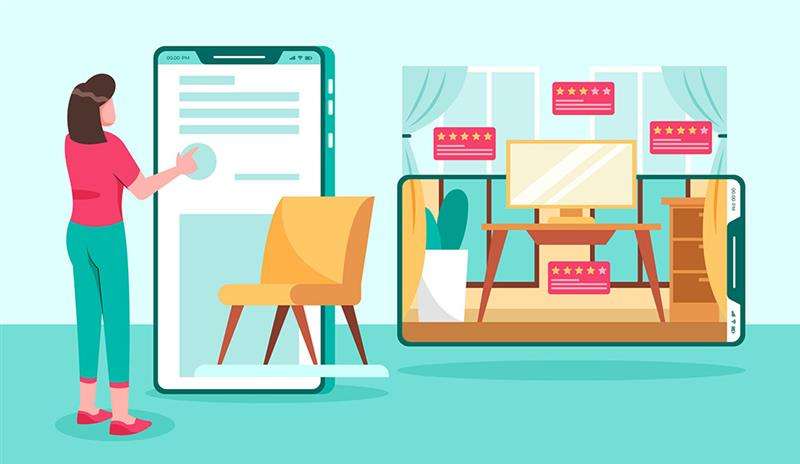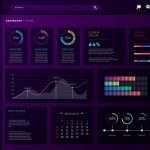
For years, mobile design has operated on a single, fundamental assumption: a fixed, rectangular screen. That era is officially over. Foldable devices, once a niche curiosity, are now a significant and growing segment of the flagship market. For developers and designers, this isn’t just an incremental update; it’s a paradigm shift.
Designing for foldables requires moving beyond traditional responsive breakpoints and embracing a new philosophy of fluid, context-aware interfaces. Users don’t just expect an app to work on a foldable screen; they expect it to transform, leveraging the unique form factor to unlock new levels of productivity and immersion. Failing to adapt means delivering a clunky, disjointed experience that feels broken by design.
Here’s a detailed guide on how to think “beyond the fold” and create mobile apps that are not just compatible with, but truly built for, this new generation of hardware.
Hire a UI/UX Designer
1. Master Screen Continuity: The Art of the Seamless Transition
The most fundamental requirement for a foldable app is flawless screen continuity. This means the user’s task state must be instantly and perfectly preserved as they switch between the cover screen (folded) and the inner screen (unfolded). A user reading an email on the small cover screen who then unfolds the device should see that exact email, in the same scroll position, on the larger display without any lag or reloading.
Achieving this requires more than just saving state; it demands a proactive approach to UI rendering and data management.
-
Intelligent State Preservation: It’s not enough to just save the current view. You must preserve the user’s specific context—scroll position, text input in a form, video playback timestamp, and more. Use view models and saved instance state APIs to ensure that no data is lost during the configuration change that occurs when a device is folded or unfolded.
-
Optimized Configuration Changes: The transition between screen states triggers a configuration change in Android. Poorly optimized apps will lag, stutter, or even crash during this process. You must ensure your app handles this change gracefully. This involves avoiding heavy operations on the main thread, optimizing layouts for quick rendering, and pre-loading assets where possible so the transition feels instantaneous.
-
Anticipatory Layout Rendering: A truly seamless app feels like it anticipates the user’s action. When a user begins to unfold their device, the app should already be preparing to render the expanded layout. By listening to hinge state APIs, you can begin the transition process before the screen is fully open, creating a magical and fluid user experience.
2. Embrace Multi-Window and Multitasking
The large inner screen of a foldable device is built for multitasking. Users expect to be able to run two or even three apps side-by-side, drag-and-drop content between them, and work in a way that rivals a desktop experience. An app that doesn’t fully support multi-window mode will feel constrained and outdated on a foldable.
To excel here, you need to design for a world where your app may not have the user’s full attention or the entire screen.
-
Design for Dynamic Resizing: Your app must be able to gracefully handle being resized on the fly as the user adjusts the split-screen divider. This means avoiding fixed dimensions, using responsive layouts like ConstraintLayout or Jetpack Compose’s adaptive components, and ensuring that UI elements reflow intelligently without overlapping or becoming unusable at narrow widths.
-
Implement Robust Drag-and-Drop: True productivity is unlocked when users can move content seamlessly between apps. Implement drag-and-drop functionality for text, images, and files. For example, a user should be able to drag a photo from a gallery app on one side of the screen directly into a chat app on the other. This requires implementing the DragAndDrop APIs and ensuring your drop targets are clearly defined and responsive.
-
Dual-Pane (Master-Detail) Layouts: The most effective pattern for large foldable screens is the dual-pane, or master-detail, layout. In this pattern, one pane displays a list of items (e.g., an email inbox, a list of contacts), and the other displays the detailed content of the selected item. This takes full advantage of the horizontal space, reduces the need for back-and-forth navigation, and provides a rich, information-dense experience.
3. Design for Posture: The Device is the UI
Foldable devices introduce a concept that is entirely new to mobile design: posture. A device can be fully open (flat), fully closed, or partially open in a “tabletop” or “flex” mode, resembling a tiny laptop. Designing for posture means making your app’s UI adapt to how the device is physically positioned, using the fold itself as an interactive element.
This is where you can create truly unique and delightful experiences that are only possible on a foldable.
-
Tabletop Mode (Flex Mode): When the device is bent at a 90-degree angle and set on a surface, the screen is naturally divided into two horizontal sections. Your app should adapt to this. For a video app, the video playback can occupy the top screen while the comments and controls are on the bottom screen. For a camera app, the viewfinder can be on top and the shutter button and gallery on the bottom. This provides a stable, hands-free user experience.
-
Book Mode: When held like a book, the fold acts as a natural separator. Reading apps can display two pages side-by-side, complete with a page-turning animation that follows the fold. This creates a more natural and immersive reading experience that mimics a physical book.
-
Hinge-Aware Layouts: Modern APIs, like Android’s WindowManager, allow your app to detect the position and state of the hinge. This lets you design layouts that avoid placing crucial UI elements directly under the fold where they might be obscured or difficult to interact with. You can ensure that your content flows naturally around the hinge, treating it as a design element rather than an obstacle.
4. Optimize for Performance and Battery
The increased screen real estate and complex UI transitions of a foldable device put a significant strain on system resources. A larger screen requires more power to light up, and rendering two panes of content simultaneously is more demanding on the CPU and GPU than rendering a single view. Without careful optimization, your app can feel sluggish and drain the battery at an alarming rate.
Performance is not a feature; it’s a prerequisite for a good user experience on foldables.
-
Efficient Resource Management: Implement lazy loading for images and lists to ensure that you’re only rendering the content that is currently visible. Use efficient data structures and algorithms to minimize CPU usage, especially during layout transitions.
-
Battery-Aware Operations: Use system APIs to detect the device’s power state. You can reduce the frequency of background tasks, lower the frame rate of non-essential animations, and dim the screen slightly when the battery is low. In a multi-window scenario, you can even pause processor-intensive tasks if your app is not the primary one in focus.
-
Rigorous Testing Across States: You cannot ensure performance without rigorous testing. This means testing on both emulators and physical foldable devices to measure app performance during screen transitions, in various multi-window configurations, and in different postures. Profile your app’s CPU, GPU, and memory usage to identify and eliminate bottlenecks before they impact the user.
Conclusion: Designing for a New Dimension
Designing for foldable devices is more than just a technical challenge; it is an invitation to innovate. It requires a fundamental shift in perspective—from designing for a static rectangle to crafting experiences for a dynamic, multi-dimensional surface. The developers and designers who succeed will be those who stop seeing the fold as a problem to be solved and start seeing it as a new tool for creating value.
By mastering seamless continuity, embracing true multitasking, designing for posture, and optimizing for performance, you can build applications that feel alive and intelligent. These apps won’t just function on a foldable device; they will come to life on it, offering a glimpse into a more productive, immersive, and context-aware future for mobile computing. The foldable revolution is here, and it rewards those who are ready to think, design, and build beyond the fold.













